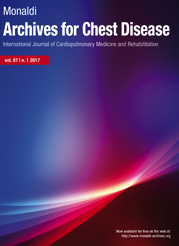Frequency of viral etiology in community-acquired pneumonia
All claims expressed in this article are solely those of the authors and do not necessarily represent those of their affiliated organizations, or those of the publisher, the editors and the reviewers. Any product that may be evaluated in this article or claim that may be made by its manufacturer is not guaranteed or endorsed by the publisher.
Authors
The identification of etiology is very important when managing patients with community-acquired pneumonia (CAP). In Pakistan, studies regarding the viral etiology in CAP are scarce. The main objective of this study was to evaluate the frequency of viral etiology in CAP patients and analyze the clinical features and their impact on prognosis. Medical records of CAP patients admitted to Aga Khan University Hospital (Karachi, Pakistan) from March 2022 to February 2023 were retrospectively reviewed, patients who had microbiological tests performed within 48 hours of the hospital admission were included, and the frequency of viral and bacterial etiology was calculated. Patients who were immunocompromised were excluded. Epidemiological and clinical characteristics were examined, and the impact on prognosis was explored. A total of 166 patients were included; 115 (69.3%) patients were identified as having pneumonia with known causative microorganisms. A total of 83 (72.1%) patients had a viral etiology alone, 18 (15.6%) had only bacterial infection, and 14 (12.2%) had a viral and bacterial co-infection. Influenza A was most frequently detected (n=46/97; 47.4%), followed by Rhinovirus/Enterovirus (n=19/97; 19.6%). Staphylococcus aureus accounted for the majority (n=18; 56.3%) of cases among bacteria. Bacterial and viral-bacterial co-infection was significantly higher among non-survivors (38.1% vs. 16.6%, p=0.034). Confusion-Urea-Respiratory Rate-Blood Pressure-Age of 65 scores of 3-5 [odds ratio (OR) 4.234; 95% confidence interval 1.156-15.501], leukocytosis (OR 0.137; 0.030-0.636), high C-reactive protein (>10mg/L) (OR 1.008; 1.001-1.014), high serum procalcitonin level (≥0.5 ng/mL) (OR 10.731; 3.018-38.153), and mechanical ventilation required (OR 47.104; 13.644-162.625) were associated with mortality. Mechanical ventilation requirement was independently associated with increased odds of mortality (OR 43.407; 8.083-233.085). Of 166 patients, 21 (12.7%) had died, with the highest percentage (28.6%) seen in the viral-bacterial coinfection group (p=0.046). To conclude, respiratory viruses are increasingly being recognized as an important etiology in CAP, with higher mortality seen in bacterial infection, whether alone or with viral co-infection.
Ethics approval
Given the retrospective chart reviews and lack of direct involvement of patients or other human participants, a waiver of ethics approval and informed consent was obtained from the Ethics Review Committee (ERC) of the Aga Khan University (ERC #2023-8526-24641).How to Cite

This work is licensed under a Creative Commons Attribution-NonCommercial 4.0 International License.







